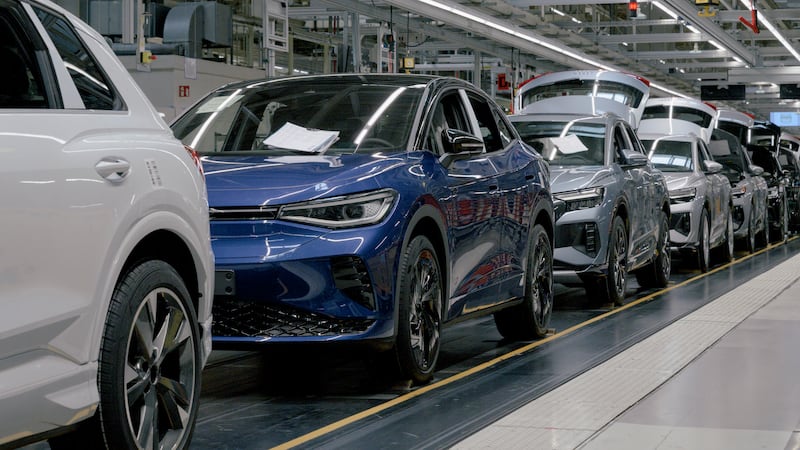BMW has just revealed its updated 3 Series saloon, which will continue on sale until it is, at least partially, replaced by the incoming “Neue Klasse” all-electric i3 saloon in 2027.
Not that this updated 3 Series is shirking its electric work. The line-up, as before, includes the 330e plug-in hybrid model, but this time around the 330e has had its electric range pretty well doubled to a claimed 101km on a full charge.
That 330e saloon will actually be the most affordable model in the 3 Series line-up when the revised version goes on sale in Ireland this summer. It will be priced at €56,700, while there will also be a petrol 320i for €58,100 and a high-performance six-cylinder all-wheel drive M340i for €97,320. There will also be Touring estate versions of all three models, with prices starting from €58,910 for the 330e.
The 330e, as before, develops a total of 292hp from a combination of a 2.0-litre turbocharged petrol four-cylinder engine and an electric motor integrated into its eight-speed automatic gearbox (that same gearbox is standard across all 3 Series models – no more manual shift, alas).
RM Block
The difference is that the battery is bigger, at least in terms of its energy capacity, which has now risen to 19.2kWh, and which gives the four-door saloon version a range of between 85km and 101km on a full charge, and the Touring estate between 83km and 91km. The battery can now also charge more quickly than before, as BMW has boosted its charging system to 11kW on AC power (although there’s still no provision for 50kW rapid charging, as available on some of its key rivals). The empty-to-full recharge time is quoted as 2½ hours on AC power. Official CO2 emissions dip as low as 19g/km.
Impressively, BMW says that in spite of the additional battery capacity, the actual physical battery takes up no more space than before, and so the car’s interior space and its fuel tank are unaffected. That does still mean that you have to put up with a smaller boot than in the conventional petrol-powered models, however – boot space shrinks from 480 litres in a 320i to 375 litres in the 330e saloon, although the Touring estate suffers less shrinkage, as it can hold up to 410 litres, up to the luggage cover, in the 330e model.
[ BMW i5 Touring road test: the 1,200km electric car drive from Munich to DublinOpens in new window ]
The 3 Series’s styling has also been revised, although you’d probably need to be a member of the BMW design team to actually be able to spot them. Really, it amounts to merely some small tweaks to the bumpers, lights and paint.
Inside, there are new steering wheels (basic models now get a two-spoke wheel, while M-Sport versions get a three-spoke one), while the big, curved screen atop the dashboard (actually two screens – instruments and infotainment – under a common cover) gets updated software and some improvements to the voice control system. Sadly, all of the physical climate control buttons have now been excised from the cabin, and those controls switched to on-screen icons but at least the proper, physical rotary controller remains on the centre console, which makes the system easier and safer to use while driving.
BMW does claim that the on-screen menus are now “flatter” and therefore simpler and easier to find your way around, while there’s also augmented navigation (which overlays directional arrows on to an image taken from the forward-facing camera) as well as more connectivity between the car and the BMW app on your mobile phone.
For the seats you can choose from basic cloth, “Sensatec” plastic leather, “Vernasca” real leather, or a new “M-Performtex” fabric for a sportier look. Under the skin, there are some subtle changes to the 3 Series’s suspension, including stiffer mounting points for the dampers.
BMW is also touting the 3 Series’s improved environmental performance, noting that all of the power for the assembly plant in Munich comes from renewable sources, while the aluminium used in the car’s body and chassis is made up of at least 50 per cent recycled material, rising to 70 per cent for the alloy wheels.
- Sign up for push alerts and have the best news, analysis and comment delivered directly to your phone
- Join The Irish Times on WhatsApp and stay up to date
- Listen to our Inside Politics podcast for the best political chat and analysis



















